Essay On Right To Education
500 words essay on right to education.
Education enables individuals to put their potentials to optimal use. Moreover, it makes them a thinker and correct decision-maker. This is possible because of getting access to knowledge from the external world. Thus, education opens new windows to the outside world. Through an essay on right to education , we will discuss its importance and benefits.


Importance of Right to Education
Education is an essential condition to free individual development. It is what can make a person fit for the tasks of citizenship. Moreover, when you are not educated, you will hardly understand politics or stay vigilant about national interests.
Thus, participation in state affairs is going to be negligible only. In other words, a citizen like that will be no less than a slave to others. This will prevent them from rising in the stature of their personality. Usually, others will make decisions for that person.
Consequently, it will be a failure of democracy. The right to education is a civil right that safeguards individuals from all this. While it does not guarantee an identical intellectual training of everyone nonetheless, it does provide provisions for that type of education.
Without the right to education, people won’t be able to get live their life as they wish to, especially those who cannot afford it. It ensures that everyone gets an equal right to education so that we all can develop as a society without leaving anyone section out.
Thus, the right to education can be life-changing for people who wish to change their lives and break the old-age cycle. It helps individuals to get equal access to education like any other citizen without any discrimination.
Benefits of Right to Education
There are many benefits which the right to education provides us with. Firstly, it has brought many changes in society in terms of ease of education. Further, it ensures a consistent fee structure for all.
In other words, schools cannot make any sudden hikes in fees so people don’t suffer from it. After that, it also ensures that everybody gets an education easily by making it available to everyone.
A lot of underprivileged students cannot find ample resources despite having talent. Thus, it ensures that they can rightfully pursue their education. Consequently, it increases the literacy rate of a nation.
This is without a doubt a great advantage for any country. Moreover, it removes any kind of discrimination especially for people belonging to different economic backgrounds. Similarly, it applies to disabled people as well.
Most importantly, it ensures that schools offer seats to those who cannot afford to pay their fees. Thus, it helps the underprivileged people to partake in it thereby making education reach all sectors of society.
Get the huge list of more than 500 Essay Topics and Ideas
Conclusion of Essay on Right to Education
All in all, every citizen must get a chance to get access to education which will enable them to judge, weigh and make decisions for themselves. It is a life-changer for many people all over the world especially those belonging to the underprivileged sector to outshine.
FAQ of Essay on Right to Education
Question 1: Why is education important for child development?
Answer 1: Education offers children to learn with diversity. Thus, children will develop healthy social interaction by blending in with other kids belonging to different cultures and backgrounds. Moreover, it can boost their self-esteem and self-confidence.
Question 2: Why is the right to education important?
Answer 2: The right to education is essential as it is a human right and indispensable for the exercise of other human rights. Quality education strives to guarantee the development of a fully-rounded human being. Similarly, it is one of the most powerful tools which can lift socially excluded children and adults out of poverty.
Customize your course in 30 seconds
Which class are you in.

- Travelling Essay
- Picnic Essay
- Our Country Essay
- My Parents Essay
- Essay on Favourite Personality
- Essay on Memorable Day of My Life
- Essay on Knowledge is Power
- Essay on Gurpurab
- Essay on My Favourite Season
- Essay on Types of Sports
Leave a Reply Cancel reply
Your email address will not be published. Required fields are marked *
Download the App


5 Must-Read Essays on the Right to Education
When the United Nations adopted the Universal Declaration on Human Rights, Article 26 asserted that all people have the right to education. That right appears in other documents such as the Convention on the Rights of the Child (1989) and in treaties about women and girls, refugees, migrants, and others. Many constitutions around the world also list education as a right. However, the right to education isn’t always upheld. To understand more about education as a human right, and where and why it’s often not a reality, here are five must-read essays:
“ Girls Can Change The World – But We Have To Invest In Them First ” – Malala Yousafzai
Writing for Time Magazine in 2018, Malala Yousafzai’s essay details the importance of educating girls. It’s short, but like all of Malala’s writing, it’s impactful. She opens with the sobering statistic that 130 million girls are not in school. Despite promises at the United Nations to guarantee that every girl will get 12 years of education by 2030, donor countries either halted or decreased their giving for education. Malala expresses her discouragement, but remains hopeful, drawing attention to the Malala Fund and impact of local activists and educators.
Do you want to pursue a career in human rights?
Our eBook “ Launching Your Career in Human Rights ” is an in-depth resource designed for those committed to pursuing a career in the human rights field. It covers a wide range of topics, including the types of careers available, the necessary skills and competencies, and the educational pathways that can lead to success in this sector. Whether you’re considering a master’s degree, looking for your first job, or exploring specific human rights issues, this guide offers valuable insights and practical advice. It’s a helpful tool for anyone looking to understand the complexities of working in human rights and how to effectively navigate the challenges and opportunities that come with this important work. Learn more .
The youngest Nobel Prize laureate, Malala is a Pakistani human rights activist, with a special focus on female education. In 2012, the Taliban attempted to assassinate her since she was already a well-known activist, but she survived. The attack and recovery made her a household name, and she won the Nobel Prize two years later. She is a writer and current student at Oxford University.
“ Is Education a Fundamental Right? ” – Jill Lepore
A relatively-unknown Supreme Court Case from 1982, Plyler v. Doe addressed questions about education, immigration, and if schooling is a human right. In her essay, Jill Lepore writes that this case could become much better known as various lawsuits filed on behalf of immigrant children enter the court system. These are the children who are separated from their parents at the border and deprived of education. Using Plyler v. Doe as a guide along with the other cases both past and present, Lepore explores the issue of education as a fundamental right in the United States.
This essay appeared in the print edition of The New Yorker in September 2018 under the headline “Back to the Blackboard.” Jill Lepore is a professor of history at Harvard University and a staff writer for the New Yorker. Publications include the book These Truths: A History of the United States and This America: The Case for the Nation.
“ How to Improve Access to Education Around the World ” – Jan Lee
In this piece on the Triple Pundit platform, Lee takes a look at how Pearson, an education publishing and assessment service company based in the UK, is making an impact on education access around the world. In the United States, Pearson works on finding solutions for the social and economic problems that lead to low high-school graduation rates. Pearson also invests in low-cost private education around the world. The essay highlights how access to education can be improved through new educational technology for students with disabilities and outreach to underserved communities. Since this article was sponsored by Pearson, it doesn’t look at what other companies or organizations are doing, but it provides a good model for the kinds of actions that can help.
Jan Lee is an award-winning editorial writer and former news editor, whose work can be found Triple Pundit, JustMeans, and her blog The Multicultural Jew. On Triple Pundit, she’s written stories on a variety of topics, such as Leadership & Transparency, Data & Technology, and Energy & Environment.
“ Higher Education Is A Human Right ” – Heidi Gilchrist
It’s established that primary education is a human right, but what about higher education? In her essay, Heidi Gilchrist argues that it is. Looking specifically at the United States, her reason is that in order to access the American dream- which she calls the “ideal it [the country] was founded on” – people need higher education. As global society starts to depend more on technology and other complex systems, more and more jobs will require advanced degrees. In order to truly succeed and achieve their dreams, people will need higher education. Gilchrist offers another perspective on the issue, as well, writing that countries need people with advanced degrees to protect national security. Having higher education remain a luxury means only the wealthy can access it, and that harms a society in every regard.
Heidi Gilchrist is a Lecturer-in-Law at Columbia Law School and an Assistant Professor of Legal Writing at Brooklyn Law. In her previous career, she served as a national security analyst in the federal government, and as a laison to the FBI’s Joint Terrorism Task Force in New York City. She writes on national security and how it converges with human rights law and civil rights.
“ Public schools for private gain: The declining American commitment to serving the public good ” – David F. Larabee
In an essay that is both a history lesson and critical look at the pursuit of education as a “private benefit,” Larabee argues that this new view of schooling is dangerous. While in the past, school had been seen as a community where students of all backgrounds and finances mingle and receive opportunities, it’s morphing into just another capitalist arena. Wealthy parents are choosing private schools and focusing their resources there, while public schools and students struggle. School is becoming “a means of private advancement,” Larabee says, instead of a source of public good. This has serious long-term consequences.
David Larabee is a Lee L. Jacks Professor of Education, emeritus, at the Standard University Graduate School of Education. He describes himself as a “sociologically oriented historian of education.” He is also an author, most recently of 2017’s A Perfect Mess: The Unlikely Ascendancy of American Higher Education.
You may also like

Child Rights Jobs: Our Short Guide
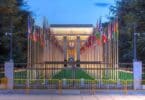
17 International Organizations Offering Early-Career Opportunities

7 Online Courses on Child Protection and Children’s Rights

Gender Rights Jobs: Our Short Guide


Apply Now for the United Nations The Hague Immersion Programme
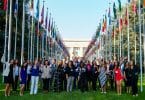
The UN Immersion Programme Is Open for Applications!
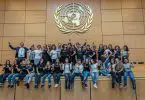
The UN Young Leaders Online Training Programme is Open for Applications!

Free MOOC on Children’s Right to Education in Armed Conflict

9 Online Courses on Leading Diverse Teams

40 Top-Rated Social Issues Courses to Study in 2024
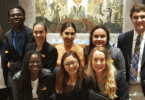
Register now: Global Institute of Human Rights Certificate Program

NGO Jobs: Our Short Guide
About the author, human rights careers.
Human Rights Careers (HRC) provides information about online courses, jobs, paid internships, masters degrees, scholarships and other opportunities in the human rights sector and related areas.
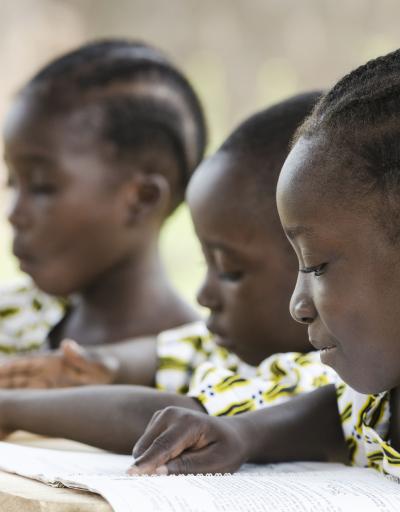
What you need to know about the right to education
Why is it important to have the right to education formally enshrined in law and other instruments .
Around 244 million children and youth are deprived of education worldwide as a result of social, economic and cultural factors. 98 million of whom are in Sub-Saharan Africa, the region with the highest out-of-school population. Yet only 70 per cent of the world’s countries legally guarantee 9 years or more of compulsory education. And an estimated 765 million young people and adults lack basic literacy skills, of which two thirds are women
Education is an empowering right in itself and one of the most powerful tools by which economically and socially marginalized children and adults can lift themselves out of poverty and participate fully in society. To unleash the full transformational power of education and meet international markers of progress such as those of the Sustainable Development Agenda, everyone must have access to it. Binding countries to certain standards by way of law is one way of ensuring access to quality education is widened. Legal guarantees and protection of the right to education are not time-bound (unlike policies and plans). They also ensure that judicial mechanisms (such as courts and tribunals) can determine whether human rights obligations are respected, impose sanctions for violations and transgressions, and ensure that appropriate action is taken.
What are the key legal documents and instruments?
Education as a fundamental human right is enshrined in the Universal Declaration of Human Rights (1948) and many other international human rights instruments . UNESCO’s foremost standard-setting instrument is the Convention against discrimination in education which dates from 1960 and has so far been ratified by 107 States. It is the first international instrument which covers the right to education extensively and has a binding force in international law. The Convention also acts as a cornerstone of the Education 2030 Agenda and Sustainable Development Goal 4 for education adopted by the international community. SDG 4 is rights-based and seeks to ensure the full enjoyment of the right to education as fundamental to achieving sustainable development.
How does UNESCO work to ensure the right to education?
Through its programme on the right to education, UNESCO develops, monitors and promotes education norms and standards in relation to the right to education to advance the aims of the Education 2030 Agenda. It provides guidance, technical advice and assistance to Member States in reviewing or developing their own legal and policy frameworks, and builds capacities, partnerships and awareness on key challenges especially in light of the evolving education context .
It also supports and monitors States in their application of legal instruments, conventions and recommendations through periodic consultations , its online Observatory on the right to education and the interactive tool, Her Atlas, which shows where in the world and to what extent women and girls have their educational rights protected by law. As part of the monitoring, UNESCO also works closely with the UN system and the Office of the High Commissioner for Human Rights.
In addition, it advocates for and promotes the right to education through communication actions as well as research and studies on specific components of this right such as on pre-primary education, higher education , and digital learning .
UNESCO mobilises, develops and fosters global partnerships to raise awareness on key issues such as the right to education of climate-displaced persons , non-state actors in education and the right to education of vulnerable groups .
Who does UNESCO partner with to ensure the right to education?
UNESCO has the lead role and responsibility in the field of the right to education in the United Nations system and cooperates with the following United Nations human rights bodies in monitoring the implementation of treaties and conventions relating to that right:
- Office of the United Nations High Commissioner for Human Rights
- UN Human Rights Committees
- Universal Periodic Review
- UN Special Rapporteur on the Right to Education
- International Labour Organization
UNESCO also acknowledges the importance of non-governmental organizations (NGOS), associations and the intellectual community in international cooperation and has built a network with organizations in its fields of competence including:
- The Right to Education Initiative promotes mobilization and accountability on the right to education and builds bridges between human rights, development and education.
- The International Organization for the Right to Education and Freedom of Education, OIDEL - a non-profit NGO promoting and creating novel educational models and policies and financing options for schools.
More on UNESCO's partners for the right to education .
Related items
- Right to education

RSS feed Facebook Twitter Donate Share -->
- News & blog
- Monitoring guide
- Education as a right
- United Nations
- Humanitarian Law
- International Human Rights Mechanisms
- Inter-American
- Regional Human Rights Mechanisms
- What information to look at
- Where to find information
- Comparative Table on Minimum Age Legislation
- Adult education & learning
- Education 2030
- Education Financing
- Education in Emergencies
- Educational Freedoms
- Early Childhood Care and Education
- Free Education
- Higher education
- Technology in education
- Justiciability
- Marginalised Groups
- Minimum Age
- Privatisation of Education
- Quality Education
- News and blog
You are here
Understanding education as a right, 116328scr_india_pupils.jpg.

Education is not a privilege. It is a human right.
Education as a human right means:
- the right to education is legally guaranteed for all without any discrimination
- states have the obligation to protect, respect, and fulfil the right to education
- there are ways to hold states accountable for violations or deprivations of the right to education
Human rights are inherent to all human beings, regardless of nationality, sex, national or ethnic origin, colour, religion, language, or any other status. They cannot be given or taken away.
Human rights are the foundation for freedom, justice and peace in the world.
They are formally and universally recognised by all countries in the Universal Declaration on Human Rights (1948, UDHR). Since the adoption of the UDHR, many treaties have been adopted by states to reaffirm and guarantee these rights legally.
International human rights law sets out the obligations of states to respect, protect, and fulfil human rights for all. These obligations impose specific duties upon states, regardless of their political, economic, and cultural systems.
All human rights are universal, indivisible, interdependent, and interrelated ( Vienna Declaration and Programme of Action , 1993, para. 5).
Equality and non-discrimination are foundational and cross-cutting principles in international human rights law. This means that all human rights apply to everyone.
International human rights law guarantees the right to education. The Universal Declaration on Human Rights , adopted in 1948, proclaims in Article 26: 'everyone has the right to education'.
Since then, the right to education has been widely recognised and developed by a number of international normative instruments elaborated by the United Nations, including the International Covenant on Economic, Social and Cultural Rights (1966, CESCR), the Convention on the Rights of the Child (1989, CRC), and the UNESCO Convention against Discrimination in Education (1960, CADE).
The right to education has also been reaffirmed in other treaties covering specific groups ( women and girls , persons with disabilities , migrants, refugees , Indigenous Peoples , etc.) and contexts ( education during armed conflicts ). It has also been incorporated into various regional treaties and enshrined as a right in the vast majority of national constitutions.
See our pages on international law and national implementation for more information.
Both individuals and society benefit from the right to education. It is fundamental for human, social, and economic development and a key element to achieving lasting peace and sustainable development. It is a powerful tool in developing the full potential of everyone and ensuring human dignity, and in promoting individual and collective wellbeing.
- it is an empowerment right
- it lifts marginalised groups out of poverty
- it is an indispensable means of realising other rights
- it contributes to the full development of the human personality
For more details, see the Committee on Economic, Social and Cultural Rights' General Comment 13 on the right to education (1999, para. 1).
The right to education encompasses both entitlements and freedoms, including the:
right to free and compulsory primary education
right to available and accessible secondary education (including technical and vocational education and training), made progressively free
right to equal access to higher education on the basis of capacity made progressively free
right to fundamental education for those who have not received or completed primary education
right to quality education both in public and private schools
freedom of parents to choose schools for their children which are in conformity with their religious and moral convictions
freedom of individuals and bodies to establish and direct education institutions in conformity with minimum standards established by the state
academic freedom of teachers and students
The 4As were developed by the first UN Special Rapporteur on the right to education, Katarina Tomaševski, and adopted by the Committee on Economic, Social and Cultural Rights in its General Comment 13 on the right to education (1999, para.6). To be a meaningful right, education in all its forms and at all levels shall exhibit these interrelated and essential features:
Available – Education is free and there is adequate infrastructure and trained teachers able to support the delivery of education.
Accessible – The education system is non-discriminatory and accessible to all, and positive steps are taken to include the most marginalised.
Acceptable – The content of education is relevant, non-discriminatory and culturally appropriate, and of quality; schools are safe and teachers are professional.
Adaptable – Education evolves with the changing needs of society and challenges inequalities, such as gender discrimination; education adapts to suit locally specific needs and contexts.
For more details see:
- Primer 3 Human rights obligations: making education available, accessible, acceptable and adaptable (RTE, Katarina Tomaševski, 2001)
When a state has ratified a treaty that guarantees the right to education, it has obligations to respect, protect, and fulfil this right. Some obligations are immediate. Others are progressive.
Obligations to respect, protect, and fulfil:
- respect: refrain from interfering with the enjoyment of the right (e.g., the state must respect the liberty of parents to choose schools for their children)
- protect: prevent others from interfering with the enjoyment of the right usually through regulation and legal guarantees (e.g., the state must ensure that third parties, including parents, do not prevent girls from going to school)
- fulfil: adopt appropriate measures towards the full realisation of the right to education (e.g., the state must take positive measures to ensure that education is culturally appropriate for minorities and indigenous peoples, and of good quality for all)
Immediate and progressive obligations:
As with other economic, social and cultural rights, the full realisation of the right to education can be hampered by a lack of resources and can be achieved only over a period of time, particularly for countries with fewer resources. This is the reason why some state obligations are progressive, for instance, the introduction of free secondary and higher education.
However, no matter how limited resources are, all states have immediate obligations to implement the following aspects of right to education:
- ensure minimum core obligations to meet the essential levels of the right to education, which includes prohibiting discrimination in access to and in education, ensuring free and compulsory primary education for all, respecting the liberty of parents to choose schools for their children other than those established by public authorities, protecting the liberty of individuals and bodies to establish and direct educational institutions
- take appropriate steps towards the full realisation of the right to education to the maximum of its available resources. A lack of resources cannot justify inaction or indefinite postponement of measures to implement the right to education. States must demonstrate they are making every effort to improve the enjoyment of the right to education, even when resources are scarce
- not take retrogressive measures. This means that the state should not take backwards steps or adopt measures that will repeal existing guarantees of the right to education. For instance, introducing school fees in secondary education when it had formerly been free of charge would constitute a retrogressive measure
States have the primary duty to ensure the right to education. However, other actors play a key role in promoting and protecting this fundamental right.
According to international law, other actors have responsibilities in upholding the right to education:
- the role of multilateral intergovernmental agencies, such as UNESCO, OHCHR, UNICEF, is of particular importance in relation to the realisation of the right to education in providing technical and financial assistance
- international financial institutions should play greater attention to the protection of the right to education in their policies, credit agreements, structural adjustment programmes and measures taken in response to the debt crisis
- private businesses also have the responsibility to respect human rights and avoid infringing on the rights of others. For more information, see UN Guiding Principles on Business and Human Rights , Committee on Economic, Social and Cultural Rights' General Comment 24 , Committee on the Rights of the Child's General Comment 16 , and our page on Privatisation
- civil society plays a crucial role in promoting the right to education and holding the state accountable for its obligations
- parents have the responsibility to ensure that their children attend compulsory education. They cannot deny their children access to education
Violations of the right to education may occur through direct action of States parties (act of commission) or through their failure to take steps required by law (act of omission). Concrete examples are given in paragraph 59 of General Comment 13 .
Whilst the vast majority of countries have ratified international treaties that recognise the full right to education, it is still denied to millions around the world due to lack of resources, capacity, and political will. There are still countries that have not integrated the right to education into their national constitution or provided the legislative and administrative frameworks to ensure that the right to education is realised in practice. Most of the children and adults who do not fully enjoy the right to education belong to the most deprived and marginalised groups of society which are often left behind in national policies.
- raise awareness on the right to education. If individuals knows their rights they are empowered to claim them
- monitor the implementation of the right to education and report regularly on deprivations and violations
- advocate and campaign for the full implementation of the right to education, holding the state accountable
- seek remedies when there are violations of the right to education
See our page on Using rights in practice for more details on what you can do.
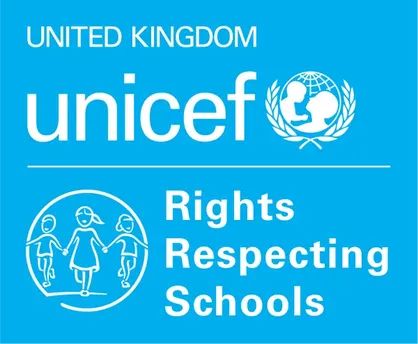
The right to education
Introducing articles 28 and 29.
Home > The Rights Respecting Schools Award > The Right to Education
The Right to an Education is one of the most important principles in becoming a Rights Respecting School.
Education is a key social and cultural right and plays an important role in reducing poverty and child labour. Furthermore, education promotes democracy, peace, tolerance, development and economic growth. There are a number of articles in the UN Convention on the Rights of the Child that focus on a child’s right to education.
Articles 28 and 29 of the Convention on the Rights of the Child
Articles 28 and 29 focus on a child’s right to an education and on the quality and content of education. Article 28 says that “State Parties recognise the right of children to education” and “should take all appropriate measures to ensure that school discipline is administered in a manner consistent with the child’s human dignity.” Article 29 focuses on the aims of education and says that governments agree that “the education of the child shall be directed to:
- The development of the child’s personality, talents and mental and physical abilities to their fullest potential.
- The development of respect for human rights and fundamental freedoms and the principles enshrined in the Charter of the United Nations.
- The development of respect for the child’s parents, his or her own cultural identity, language and values, for the national values of the country in which the child is living, the country from which he or she may originate and for civilisations different from his or her own.
- The preparation of the child for responsible life in a free society in the spirit of understanding, peace, tolerance, equality of sexes and friendship among all peoples, ethnic, national and religious groups and persons of indigenous origin.
- The development of respect for the natural environment.
The 1990 World Declaration on Education for All described education as consisting of essential learning tools such as literacy, numeracy and problem solving combined with knowledge, skills, values and attitudes required by human beings to survive, develop potential, to improve the quality of their lives, to make informed decisions and to continue learning.
General Comment on the aims of education
In 2001, the Committee on the Rights of the Child , the body of experts that monitors the implementation of the Convention, published a paper (called a General Comment) that explained and elaborated on the right to education.
The General Comment 1 on the aims of education provides a very clear overview of what the right to education means in practice. It said that:
- Education must be child-centred and empowering. This applies to the curriculum as well as the educational processes, the pedagogical methods and the environment where education takes place.
- Education must be provided in a way that respects the inherent dignity of the child and enables the child to express his or her views in accordance with article 12 (1) and to participate in school life.
- Education must respect the strict limits on discipline reflected in article 28 and promote non-violence in school.
- Education must include not only literacy and numeracy but also life skills such as the ability to make well-balanced decisions; to resolve conflicts in a non‑violent manner; and to develop a healthy lifestyle, good social relationships and responsibility, critical thinking, creative talents, and other abilities which give children the tools needed to pursue their options in life.
It’s important to remember that the Convention must be seen as a whole and so articles 28 and 29 should not be looked at or considered in isolation. Particular regard should be paid to the General Principles and other closely related articles for example: article 16 : protection of privacy, article 24 health (including health education), article 31 rest, leisure, play, recreation and culture.

Steps to the award
Getting Started
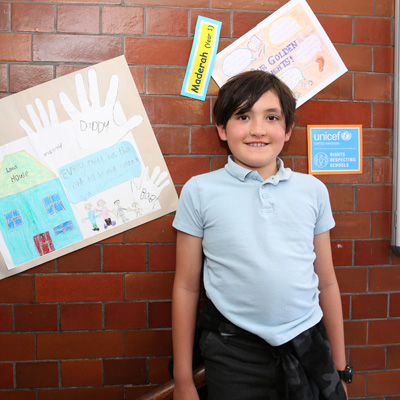
About the award
Introducing the United Nations Convention on the Rights of the Child
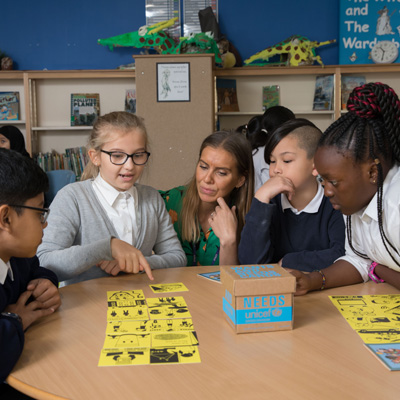

IMAGES
VIDEO
COMMENTS
Question 2: Why is the right to education important? Answer 2: The right to education is essential as it is a human right and indispensable for the exercise of other human rights. Quality education strives to guarantee the development of a fully-rounded human being.
Why is education a fundamental human right? The right to education is a human right and indispensable for the exercise of other human rights. Quality education aims to ensure the development of a fully-rounded human being.
To understand more about education as a human right, and where and why it’s often not a reality, here are five must-read essays: “ Girls Can Change The World – But We Have To Invest In Them First ” – Malala Yousafzai
Education is a basic human right that works to raise men and women out of poverty, level inequalities and ensure sustainable development. But worldwide 244 million children and youth are still out of school for social, economic and cultural reasons.
Why is it important to have the right to education formally enshrined in law and other instruments? What are the key legal documents and instruments? How does UNESCO work to ensure the right to education? Who does UNESCO partner with to ensure the right to education?
Education as a human right means: the right to education is legally guaranteed for all without any discrimination. states have the obligation to protect, respect, and fulfil the right to education. there are ways to hold states accountable for violations or deprivations of the right to education.
Why does education matter? Education enables upward socioeconomic mobility and is a key to escaping poverty. to fostering tolerance and more peaceful societies. lment rates at all levels,...
Guaranteeing the best conditions for children to access a quality, inclusive, free education is the kind of positive human rights agenda all countries should rally around in 2023.
Overview of the main principles of right to education: • Primary education that is free, compulsory and universal • Secondary education, including technical and vocational, that is generally available, accessible to all and progressively free • Higher education, accessible to all on the basis of individual capacity and progressively free ...
Education must include not only literacy and numeracy but also life skills such as the ability to make well-balanced decisions; to resolve conflicts in a non‑violent manner; and to develop a healthy lifestyle, good social relationships and responsibility, critical thinking, creative talents, and other abilities which give children the tools need...